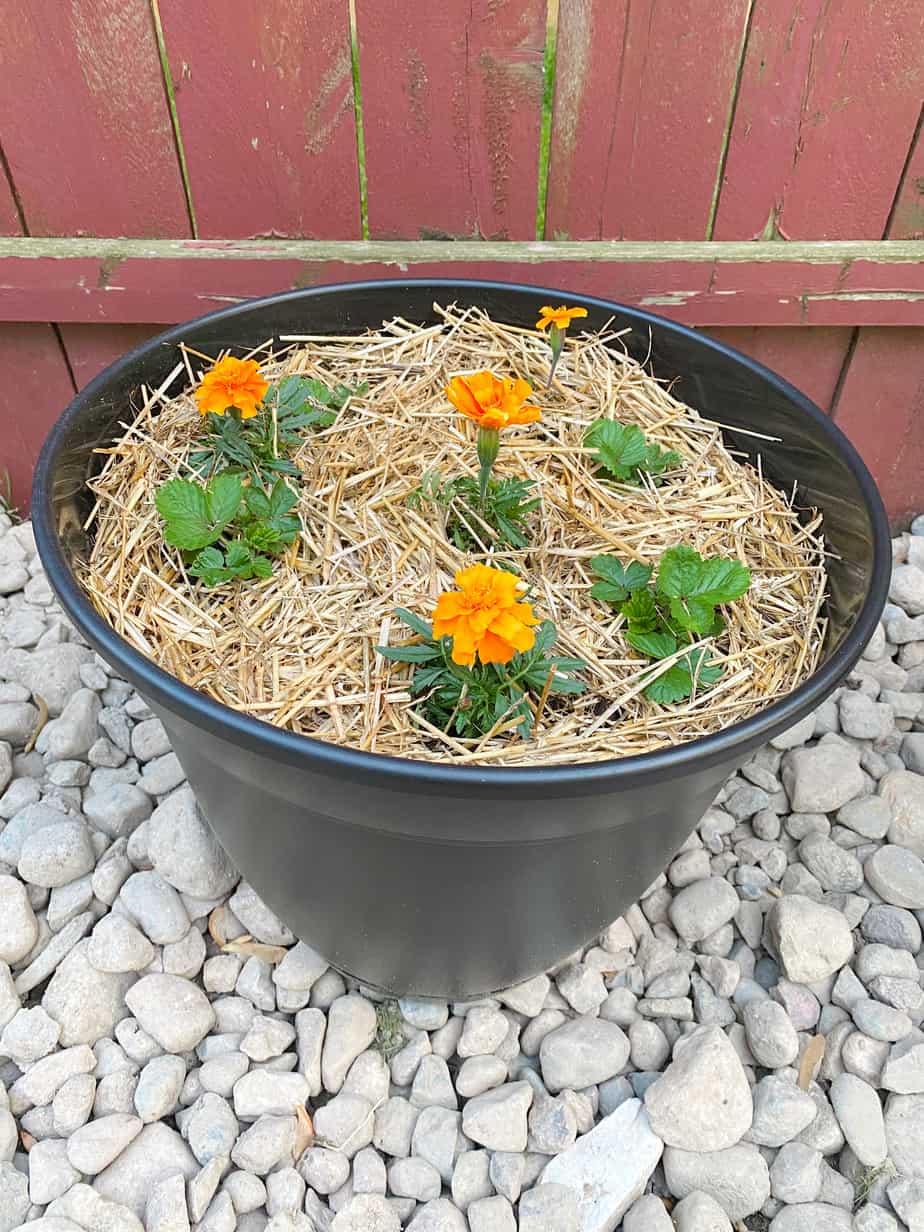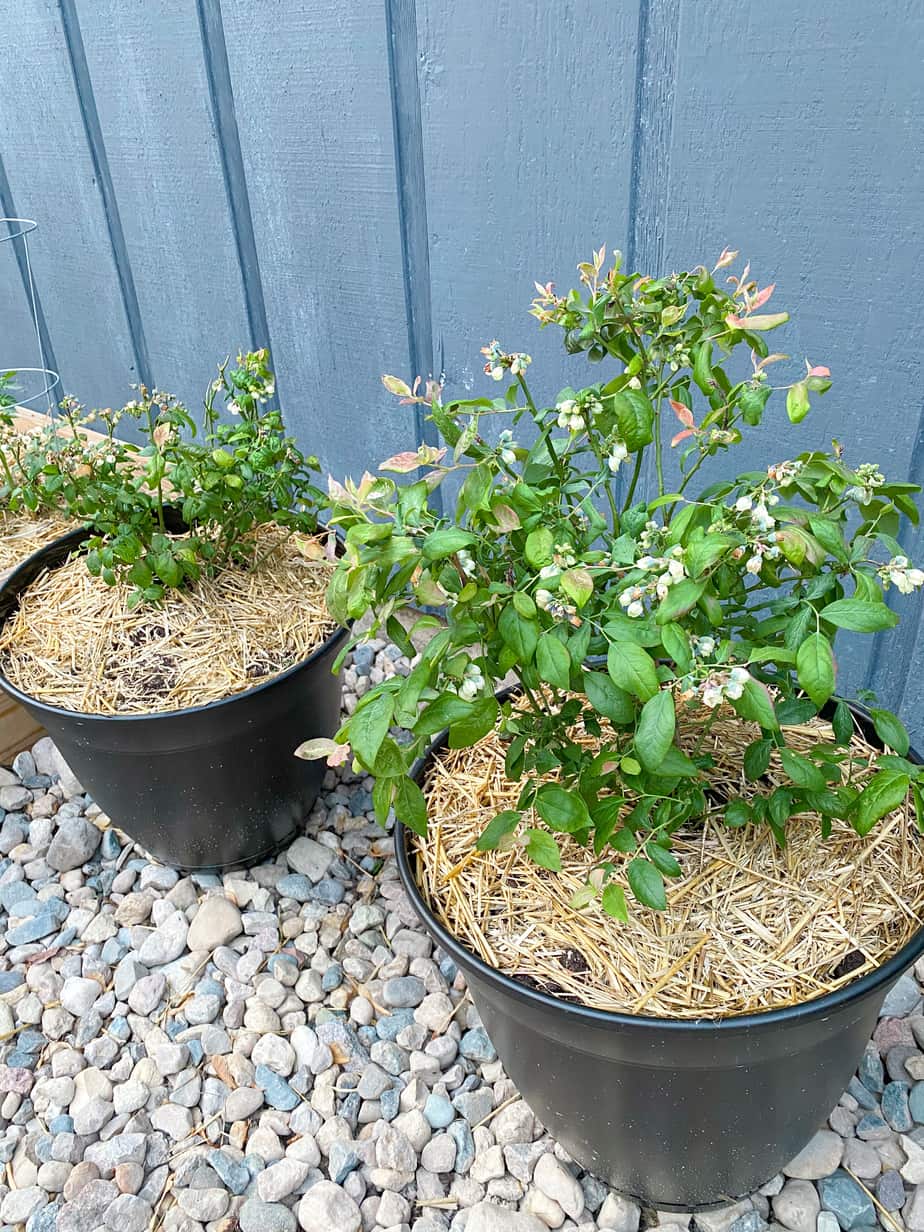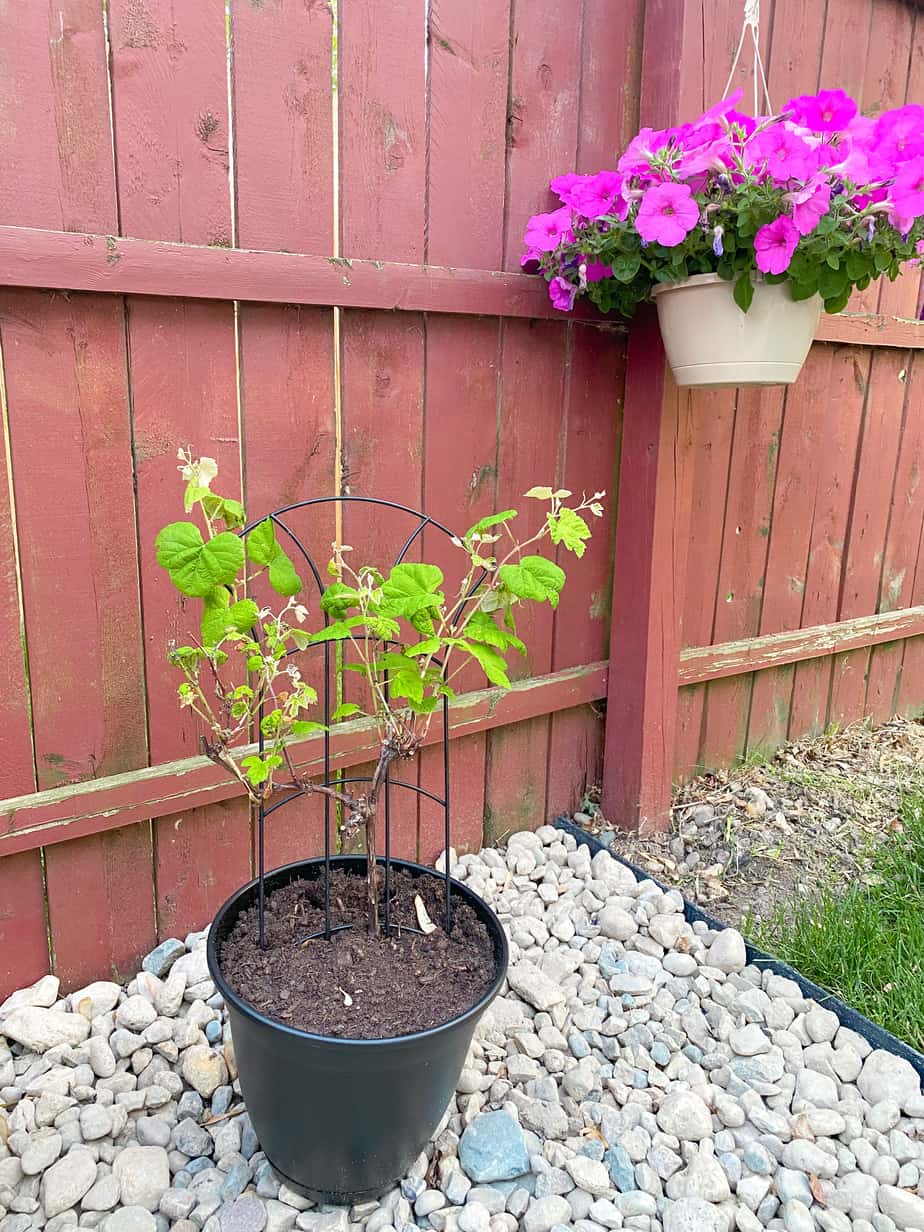Since staring my garden I’ve realized there’s much more to growing fruits and vegetables than simply putting seeds in dirt and watering them. I think this is why people (myself included) get overwhelmed by the idea of starting a garden. Although I am hopeful that my garden will be successful, I have low expectations and I’m treating this year as a learning experience. I hope that by sharing my experience as a beginner gardener it will encourage you to feel confident in starting your own! In this post I am sharing all of the tips I’ve learned on how to grow fruit. You will learn how to plant and grow strawberries, blueberries, raspberries, and grapes.
Affiliate links are included in this post. If you click on these links I may receive a small commission from your purchase at no extra cost to you. Thank you for supporting my blog!

Strawberries
The first thing you should know is that there are 3 different types of strawberries: June bearing, everbearing, and day-neutral. I chose everbearing because they should produce berries in the spring, and again in late summer or early fall. June bearing strawberries typically produce one large crop in June and day-neutral strawberries fruit all season long but the berries are usually smaller.
Planting:
Strawberries like to be planted in direct sun, with well draining soil, about 12 inches apart. It’s recommended to plant them in containers because they can spread and take over your garden. Make sure not to burry the crown of the plant or else the plant can suffocate. It’s also recommended to mulch the top of the soil to deter pests and keep the soil moist.
Watering:
Strawberries like their soil to be moist, but not soaking wet. Water deeply and let dry before watering again.
Tips:
- Remove the first blooms so energy goes to the roots and produces bigger strawberries.
- Fertilize once you start to see buds. You can spray the plant weekly with a compost tea.
- Companion plants include sunflowers, asparagus, onions, and marigolds.

Blueberries
I purchased Bushel and Berry blueberry plants from Lowes. Their cute packaging totally sold me, but they’re actually a really cool company that creates decorative, self-pollinating plants. They have fun varieties of blueberries that have beautiful colored leaves that change color in the winter. I purchased the pink icing and peach sorbet blueberry plants for my garden.
Planting:
Blueberries need 6 hours of full sun a day. They like to be planted in very acidic soil (4.5 – 5.5). You can purchase a soil test kit from your local garden center to test the pH levels. I am currently looking into purchasing one and I will update this post with the one that I buy if I think it works well. There are various ways that you can make your soil more acidic but it seems like the easiest way to do this is to add an acidifier like this to your soil.
Watering:
Blueberries need consistent moisture, but do not like to be overwatered. If your blueberries are planted in a container, water daily until you see water coming out of the drainage holes.
Tips:
- Fertilize in early and late spring
- Prune out dead branches in the spring – this will help the plant put it’s energy into producing fruit on healthy branches
Raspberries
Just like strawberries, there are June-bearing strawberries and ever-bearing strawberries. I purchased June-bearing raspberries for my garden but it’s a good idea to grow both types so you have raspberries all season long!
Planting:
Raspberries prefer to be planted in full sun, but need afternoon shade in extreme heat to prevent sunburn and drying out. They can tolerate partial shade but the raspberries will be smaller. Plant in multipurpose compost or loam soil (a mixture of equal parts sand, silt, and clay). Raspberries like slightly acidic soil (6.0-7.5).
Watering:
Raspberries are prone to drying out. Keep soil moist, but not wet.
Tips:
- Raspberries need a growth support such as a stake or trellis.
- Fertilize with a high nitrogen fertilizer (such as this) in the spring to boost new growth. In fall after the plant is finished producing fruit, prep the root system for winter with a high phosphorus fertilizer (such as this).
- Raspberries are ready to be picked when they are full of color and easily pull away from the plant
- Raspberries will grow on the same branches (canes) twice. If the cane is green after it produces fruit, it should produce raspberries one more time. If the cane is brown after producing fruit, you can cut it down.

Grapes
I purchased my grape plant before doing any research, and it seems like a difficult fruit to grow. They actually don’t even produce any grapes until the second year. The good news is, they can produce grapes for several years if properly taken care of right after planting.
Planting:
Grape vines like to be planted in well draining, neutral soil in full sun. They also need space for air circulation to avoid disease. Try to avoid pots that are black and/or plastic (like mine, LOL) because the roots can get too hot.
Watering:
In the first few years, grapes need to be watered often (about 1-2 times per week). Aim to keep the soil moist but not soggy.
Tips:
- Grapevines can grow up to 7 feet, so it’s important to get tall enough trellis to train it to grow on.
- Fertilize in spring
- Protect your grape plant in the winter by storing it in a warm area
I hope this post leaves you feeling more prepared than I was when planting your fruits. Make sure to subscribe to my YouTube channel and follow me on Instagram for more gardening updates (and learn from my mistakes!) Thank you so much for reading and supporting my blog.
Xo, Ciara
Read next: Why You Should Start a Garden This Spring